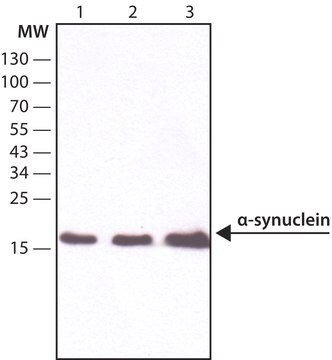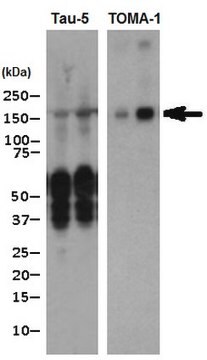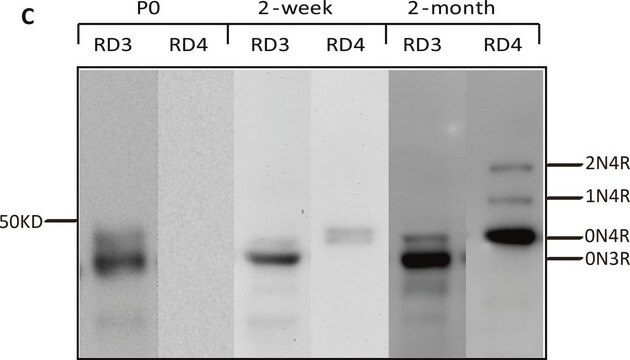ABN2265
Anti-alpha-Synuclein Antibody, oligomer-specific Syn33
from rabbit
Synonim(y):
oligomeric alpha-synuclein, Non-A beta component of AD amyloid, Non-A4 component of amyloid precursor, NACP
About This Item
Polecane produkty
pochodzenie biologiczne
rabbit
Poziom jakości
forma przeciwciała
purified antibody
rodzaj przeciwciała
primary antibodies
klon
polyclonal
reaktywność gatunkowa
human
opakowanie
antibody small pack of 25 μg
metody
ELISA: suitable
immunofluorescence: suitable
inhibition assay: suitable
western blot: suitable
izotyp
IgG
numer dostępu UniProt
docelowa modyfikacja potranslacyjna
unmodified
informacje o genach
human ... SNCA(6622)
Opis ogólny
Specyficzność
Immunogen
Zastosowanie
Western Blotting Analysis: A representative lot detected recombinant alpha-Synuclein, oligomers. (Sengupta, U., et. al. (2015). Biol Psychiatry. 78(10):672-83).
Western Blotting Analysis: A representative lot detected recombinant alpha-Synuclein, oligomer. (Courtesy of Dr. Rakez Kayed′s laboratory at University of Texas Medical Branch, Galveston).
ELISA Analysis: A representative lot detected alpha-Synuclein, oligomers in ELISA application (Sengupta, U., et. al. (2015). Biol Psychiatry. 78(10):672-83).
Inhibition Analysis: A representative lot inhibited cytotoxicity exerted alpha-synuclein oligomers in human neuroblastoma SH-SY5Y cells measured by MTT-based assay (Sengupta, U., et. al. (2015). Biol Psychiatry. 78(10):672-83).
Apoptosis & Cancer
Jakość
Western Blotting Analysis: A 1:500 dilution of this antibody detected alpha-Synuclein in alpha Synuclein aggregates.
Postać fizyczna
Przechowywanie i stabilność
Inne uwagi
Oświadczenie o zrzeczeniu się odpowiedzialności
Nie możesz znaleźć właściwego produktu?
Wypróbuj nasz Narzędzie selektora produktów.
polecane
Kod klasy składowania
12 - Non Combustible Liquids
Klasa zagrożenia wodnego (WGK)
WGK 1
Temperatura zapłonu (°F)
Not applicable
Temperatura zapłonu (°C)
Not applicable
Certyfikaty analizy (CoA)
Poszukaj Certyfikaty analizy (CoA), wpisując numer partii/serii produktów. Numery serii i partii można znaleźć na etykiecie produktu po słowach „seria” lub „partia”.
Masz już ten produkt?
Dokumenty związane z niedawno zakupionymi produktami zostały zamieszczone w Bibliotece dokumentów.
Nasz zespół naukowców ma doświadczenie we wszystkich obszarach badań, w tym w naukach przyrodniczych, materiałoznawstwie, syntezie chemicznej, chromatografii, analityce i wielu innych dziedzinach.
Skontaktuj się z zespołem ds. pomocy technicznej








